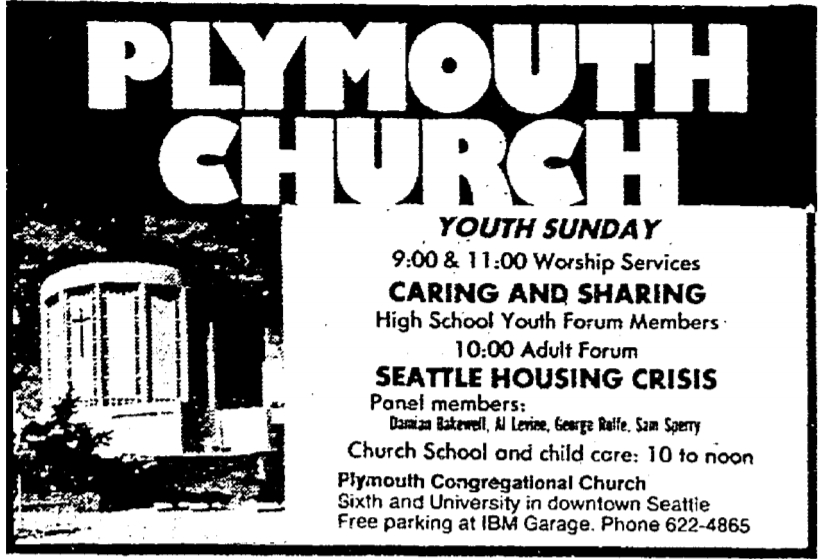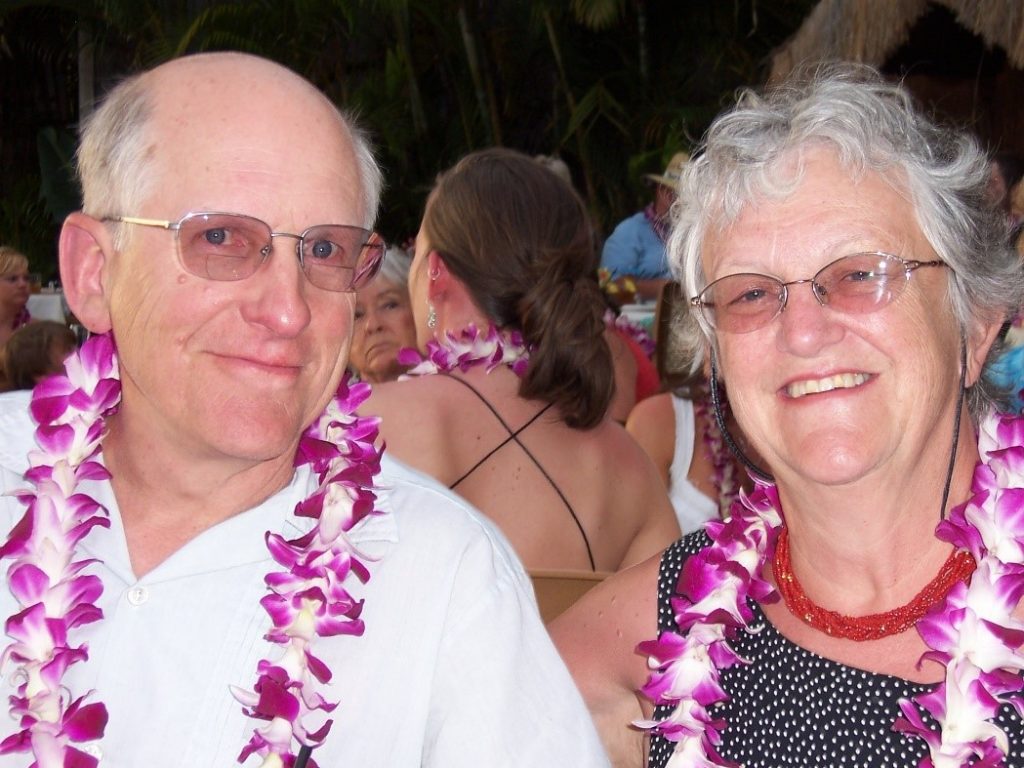As their Peace Corps service in Bolivia came to an end, Bob and Marcia Almquist had to decide where they’d be for the next chapter of their lives. With no family in the U.S., Marcia didn’t have strong preferences. And after years on the East coast and time spent abroad, Bob was ready to return to the city he grew up in—Seattle.
“When we arrived in Seattle in 1969, they were just finishing the freeway. There were no tall buildings, it was just a burgh,” Marcia recalls. “And my friends in New York laughed at the fact that I was going to go live in Seattle, like That’s the end of the world!”
But the city was changing, growing. In 1969, the Space Needle was dethroned as tallest building in Washington state. Jim Ellis and his Forward Thrust Committee were making headway on their ambitious public works plan which included parks, public pools, a domed stadium, and low-income housing.
However, some of that growth brought negative impacts. And economic changes hit Seattle hard, causing the city’s unemployment rate to rise to the highest in the nation.
“First Avenue at that time, was all [single-room occupancy] buildings like the Lewiston, up and down. They started coming down one by one, and those people, they were mostly old sailors and fishermen who lived in those buildings, they were being displaced,” Marcia explained.
The signs of displacement were evident to the congregation at the Almquist’s church.
“We maybe had six or seven people that would sleep in the doorway entrance [of the Plymouth Downtown Congregational Church],” Marcia said. “It was really worrisome when all of a sudden you had these people that were sleeping on your doorstep, that were out in the cold.”
“The pastor at the time, David Colwell, said that as far as he was concerned, one homeless person in Seattle was one person too many. He called us to a study group that tried to understand what was happening and what the future would look like.”

Plymouth Church ad promoting a forum on the Seattle Housing Crisis. Ran in The Seattle Times on April 26, 1980.
“We examined a bunch of different options for what role the church could play. Other churches were being really active at the same time in this same arena, because everyone was concerned about what was happening. Eventually [it was] decided that, if we wanted to do something, we really needed to get involved in development and real estate.”
Of course, that decision opened up a whole new slew of questions.
“[We were at a] church retreat at Seabeck on Hood Canal when the idea was proposed that we form a separate nonprofit and start providing housing. It was quite an interesting discussion because people were, at that time, concerned because of liability issues that the assets of the church would be tapped. [But] the thing I remember most was that the real question was: when the toilets plug up, who’s going to go unplug the toilets?” Marcia laughed.
After working through lots of questions, Plymouth Housing Group was formed in 1980. Limited funding meant the organization had to get resourceful. Members, including Marcia, Bob, and even their children, put in long hours of hard work to get those first properties move-in ready.
“We didn’t have any money,” Marcia said. “We started with $1,500 as a church special offering.”
“We must have hauled out 15, 16 truckloads of garbage from the top two stories of that building,” Marcia recalls about the Seven Seas Hotel, the first property Plymouth operated. “When the Olympic Hotel was closing for renovations, we went through and chose the 17 best beds and loaded them into trucks and hauled them, because that way we would have much better beds than what had been there before.”
“When we first rented the Lewiston,” which Plymouth later purchased, “the basement was filled with beer bottles. Filled! My kids were then, maybe 10, 8, and 6. We drove a Volkswagen bus, and I remember Bob driving and the kids went scurrying down to the basement and they came up just hauling beer bottles.”
And once residents had moved in, Marcia had the opportunity to get to know them when she came to cash checks and collect their rent in her role as treasurer of the founding board.
“I developed some wonderful memories with some of the tenants in the Lewiston and also with Scott, the first manager of the Seven Seas. Those people really opened up to me,” she remembers.
“Many of them had spent their life on the water in some form or another. All of those old guys had retired from the fishing industry. They had good stories to tell about being up in Alaska and about their own life stories.”
From humble beginnings, Bob and Marcia watched Plymouth grow into what it is today, during their decades of involvement. Marcia was a founding member of Plymouth’s board, only rolling off the board when she or Bob’s staff positions required it. After retiring from teaching, Bob worked at Plymouth in Social Services for 15 years. That dedication came from a passion for the mission.

“I have to think a lot about what Bob used to say,” Marcia explained. “It was so real to Bob that these were beautiful people who, somehow, had gotten onto a track that was going in one direction, as opposed to a track that would have taken them another direction, and it was really no choice of theirs. This was kind of what life dealt them. He would tell me incredible stories. He loved those people so much.”
We’re proud to commemorate Bob and Marcia’s legacy of compassion by naming our 15th building after them.
“Well, I can’t believe it, first off,” Marcia replied, when asked how she felt about the building name. “It’s an incredible tribute. I can’t think of something another organization could do, something that would make me feel so proud and so honored.”
“And I just wish Bob were here to see it,” she paused. “But maybe he knows.”